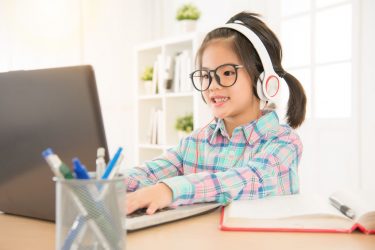
This week, it started. I began to hear about school closures due to COVID-19, the coronavirus disease of 2019 right here in Raleigh where I live. These began as mostly one day closures to allow schools to be thoroughly sanitized out of an abundance of caution, but the closures have now become more widespread and are lasting longer. Just outside New York City, in New Rochelle, schools have been closed for two weeks as part of a wider quarantine. Similar actions are being taken across the country, including at some of North Carolina’s most popular universities—Duke and UNC-Chapel Hill are shifting to online courses starting March 23. It’s not unlike the actions being taken by employers who, in sectors where it’s possible, are telling employees to work from home. Just yesterday, the NBA announced it will be suspending the rest of the season, as will the NHL, and the NCAA men’s basketball tournament has been canceled. The experts seem to agree this is going to get worse before it gets better.
So as not to contribute to panic, let me be clear that I’m not terribly worried about this virus on a personal level – at least not yet. I’m still going out, I’m still hugging friends, and I’m not wearing a mask. Yes, it’s infected a lot of people, but most of those cases have been mild, and people are recovering. For a small minority, it’s much more severe, and any loss of life at all is tragic. However, I don’t believe we’re on the cusp of a global pandemic on the order of Spanish Flu. Sensible precautions are warranted much like in any bad flu season; stockpiling toilet paper is not.
In other parts of the world, of course, infection rates are higher for a variety of reasons. And in those places, more extreme precautions are having to be taken. Hong Kong is a prime example. Schools there have been closed for at least three months, and that could be extended. For now, all 800,000 students in Hong Kong – from preschoolers to university students – are doing school online from home. Essentially, this COVID-19 outbreak has caused a large, unplanned experiment in virtual schooling.
I find this fascinating. Virtual school has been around for a while, but it’s been controversial. Do kids really learn well sitting in front of a computer all day? What about socialization? How do you make sure kids stay on task? What does online kindergarten even look like? How can we know kids are actually learning and taking their own tests?
And yet, faced with an outbreak of a rapidly spreading virus in a city with a population density of more than 17,500 persons per square mile (by comparison, Charlotte’s is 1,510/sq mile), authorities decided to send children home. It’s early, so it’s hard to know how this is going to work out, but I’m interested in what we might find. What if this actually works well? What if, when kids return to classrooms, it turns out that they’ve kept up with the pace that would have been expected had they been in a traditional school setting? What if they’ve exceeded that pace? What if parents decide they actually quite like this virtual school model and think it works well for their children?
And what if, as I expect will be the case, results are mixed – some parents love it, while others hate it, and some children thrive, while others struggle?
Proponents of school choice have always argued that children are all different. One of the fundamental problems with one-size-fits-all public schools is that they have a hard time meeting the needs of all children. It’s difficult to tailor lessons in a classroom of 30 kids. It’s difficult to slow down when one or two students need to go over something again, or try a different approach when a handful of kids aren’t quite getting the material. It’s difficult to offer courses in specialized fields or at advanced levels that may only appeal to a few kids in each school.
Virtual schools offer a potential answer to many of these challenges. In North Carolina, we already have the second largest virtual public school in the country; NC Virtual Public School (NCVPS) has been around since 2005, offers 150 courses, and enrolls more than 32,000 high school students across the state. In addition, since 2015, there have been two virtual charter schools in North Carolina, which are both K-12 and have more than 4,600 students. There are also many homeschooling parents who use virtual schooling as part of the mix of courses and curriculum they’re offering their children. While virtual schools won’t be right for every child, the level of demand for these charters, which are vastly oversubscribed, and the tremendous growth of NCVPS, communicates that parents are looking for the sort of education these schools offer.
If COVID-19 and associated quarantines help us to think more creatively about ways to deliver education to students, then that would be a real positive to come out of this very concerning epidemic. If these sorts of unplanned experiments help us to better understand the strengths and weaknesses of virtual schooling so that we can make it better or use it more appropriately, then that’s a win. And if we come away from all of this more willing to allow parents the choice of a virtual school for their children, that could be a significant silver lining to the gray cloud of COVID-19. Let’s continue to pray for a quick solution and end to the harmful effects of this virus, while also keeping an eye out for the positive side that challenges like this can bring.
POVs are point of view articles from NC Family staff and contributors